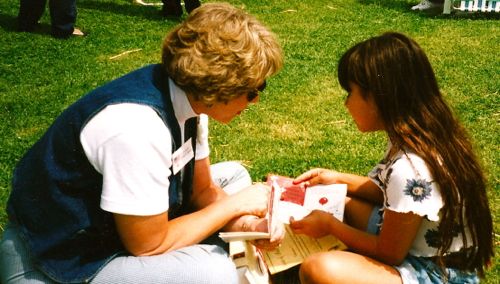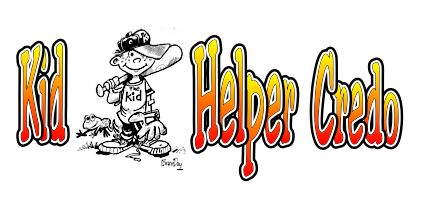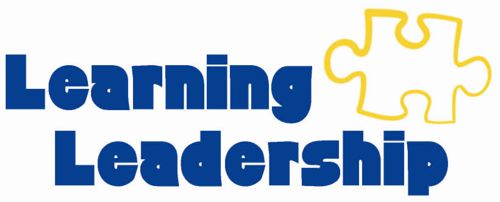• A Helping Hand
There is something special about offering someone your hand. It is symbolic of presence, or not doing something alone. To extend a helpful hand is something every children’s leader can do. Find a child! Come along side them and offer them your hand of assistance. Every kid, no matter how good his parents are, needs the support from other nurturing adults. What better choice for that than a children’s leader who offers a welcoming outstretched hand?
We find this illustrated in the Scriptures. The Lord said, “So do not fear, for I am with you; do not be dismayed, for I am your God. I will strengthen you and help you; I will uphold you with my righteous right hand.” (Isa. 41:10)
“For I am the LORD, your God, who takes hold of your right hand and says to you, do not fear; I will help you.” (Isa. 41:13)
And Jesus said, “Therefore go and make disciples of all nations, baptizing them in the name of the Father and of the Son and of the Holy Spirit, and teaching them to obey every thing I have commanded you. And surely, I am with you always, to the very end of the age.” (Matt. 28:19, 20)
Giving someone your hand is, not necessarily, giving them a “hand out!” It is not really about money, but offering a hand that helps. Giving a hand is not the privilege for the rich and famous. It is reserved for all who love others, as Jesus did. I believe that one of the greatest gifts we can offer others is your helpful hand. Reach out and touch someone!
We need good adults who remember how helpful someone was to them. Then they can return the favor to those less fortunate than themselves. This will render assistance, especially if you ask God to lead you to help others in need. You cannot help everybody, but you can help someone.
There is someone you can help. Why not be more intentional about it? If you have been helped, return the favor. You have been left an example, so you could be helpful like someone was to you in your need.
Challenge:
Why not be there for children? You might just be the friend that will help them succeed with their lives.
If you want friends, you have to show yourself friendly. Extend your helping hand. You might find that this, act of friendship, is really imitating God. Be sure that you do not neglect to give children a hand in knowing about Jesus. You might be a real Kid Helper too.
“Here, take my hand. I will assist you through this. I will go with you, so you will not be alone. I think you could use my help. It will be OK. We will face this together. We can do this. Stay close, so you will not wander off. When you are afraid, I will be here—right by your side. Hold on, we are going for a ride. I will be your friend. I will be right here, by your side.” — Your new traveling companion.
• A Light in the Fog
Light in a Fog
Fog has a way of engulfing the visible rendering it invisible. Normally, a Lighthouse is useful at night when visibility is diminished. Then you add fog in the night and you have a hazardous condition for navigating any coastal waters. Lighthouses have been strategically constructed all along rugged coastlines to provide direction and warning of dangerous conditions for mariners at sea. Many a seaman has been helped by such a focused source of light that can provide just enough “glow in the haze” to provide some sense of direction. Of course, it shines even brighter when as the fog begins to lift.
Someone recently paid me this compliment regarding my coaching her in Children’s Ministry. “You were like a bright light in a fog for me?”
This caused me to think. Would it be possible that conditions would be such that a leader could feel so unprepared for Children’s Ministry? Could someone be so overwhelmed with a sense of duty that they could just loose their way—like a ship on a foggy night? Yes, I have seen it happen. Such was the case with my student.
She was not sure what to do, not being specifically trained or prepared for her new ministry, but fully trying, as best she could, not able to see clearly very far ahead. She was feeling really alone with none to help her. She seemed clueless, no clear vision of where she was going—she was in a fog.
Then there was this beam of focused light that peered through the haze, faint at first, but clearer, as distance got closer to the source.
Even the reflected light in the foggy haze brought some hope and direction. Then the fog lifted!
Now there was more clarity to her vision. She made some critical adjustments and navigated the rocky hazards. The shipwreck was averted in troubled waters.
With some new insights and skills, she resolved to chart a new course. She embarked on a whole new adventure, this time venturing into deeper waters, but with a plan.
What made the difference in her journey? It was the Lighthouse! That faithful focused beam of light was the turning point. Another ministry casualty was rescued!
Coaching Works…
“Imagine how a focused beam of coaching light can encourage a new direction with proven strategies to help one avert shipwreck.”
• Lead Children to Jesus
Teachers: Lead Children to Jesus
The fruit of the righteous is a tree of life, and he who wins souls is wise. Prov. 11: 30
The greatest joy of teaching children is watching them put their faith in Christ. The hope of each generation remains in the children. The Scripture makes it really clear that each generation should bear witness to the things of God to the next generation. This sharing is not coercion, trickery or pressure. Sharing our faith is done in a loving relationship where we share what we believe…Christ died for our sin. Renouncing our sinful ways and putting our whole trust in the finished work of Jesus is life changing—even for children. We believe that the power of a good relationship is the best method of sharing the Lord of Jesus with children. As a teacher of the Bible, we share the good news of what Jesus did and what he said.
Here are Ten Guidelines for helping a children’s ministry leader to reach the children in their program.
1. Establish a relationship of trust and confidence (credibility). Value each child. If you don’t genuinely care about them, they won’t care about your God.
2. Discover the child’s background and interests. Find out about the faith of the parents. Call them by name. Show interest in anything they are interested in.
3. Kids must acknowledge both love and respect for the Lord. It is important to learn of his/her understanding about God’s character.
4. Communicate from the “known” to the “unknown.” It helps to know where the child is developmentally, what exposure to spiritual things already exists for the child. Begin where they are and take them where they need to go.
5. Learn for yourself the parts of the gospel message, so you can teach it. Learn different ways to present the gospel message—learn gospel methods.
6. Begin teaching the children to prayerfully obey and respond to each lesson by praying a prayer with you. Teaching them to pray with you makes it easier for them to learn and pray for themselves. Exercising one’s faith is a function of prayer. It is “who we believe in,” not what we “do” that saves us.
7. Begin asking kids to talk with you after class, not because they do something wrong, but because you are interested in them and that you care.
8. Prepare a sample salvation prayer that you could use when a child is ready to respond. Begin praying that you might have the opportunity to help them come to know Jesus. Be ready to share.
9. Pray for the salvation of every child that comes under your care and ministry. Perhaps God has given you just the right ones, so you can speak into their lives and influence them for eternity.
10. Prepare yourself for Satan’s attacks on your ministry. Take a stand against Satan’s Tricks. Be courageous and pray for the souls of children.
• Rule of Thumb

Words the Coach Uses: “Rule of Thumb”
Originally, the thumb, from the end to the first joint, became a unit of measurement, equivalent to about an inch. However, the “rule of thumb” has come to mean an estimate based upon experience, a rough calculation, as opposed to careful calculation. For me, it is a quick reference and/or an easy way to generalize from experience, particularly when in a discussion, when accuracy cannot be accomplished (no resources like calculator, reference works, etc.). You might call it, a mental “guesstimate,” or an estimate based upon experience rather than careful calculation.
Example: “About one fourth (25%) of a church’s attendance is children from 0 to 12 years old.” It is a starting point, it could be more or less, but it remains my “rule of thumb.”
• Coach’s Conundrum #12
Seven Times in Seven Places!
This is not original with me. I first heard it from Karl Bastian, and I have been using it ever since. It just makes sense to me, knowing how much communication is needed in children’s ministry to just get the simplest message to stick. So here is what it means: To promote some announcement or program that you have communicate “seven times in seven different places.”
If want your parents to get your important messages, you have to consider saying it, at least, seven ways to communicate it, and seven different places around your Church campus. This also means that you might not be advertising or promoting enough, if you just communicate a few times, in just a few places.
Here are some Ways to communicate your announcement or program. Can you think of other ways?
- Bulletin or bulletin insert
- Announcements
- Monthly newsletter
- Take-Home Handout
- Posters
- Signs
- Bulletin Boards
- Mailings
- Phone Calls
- Email Blast
- Postcard
- Oral/ Leaders
Here are some different Places you might try. Can you think of others?
- Walls/Halls
- Internet Blog/Web
- Pulpit
- Handouts
- Take Home Paper
- Teacher’s Meeting
- Parent Program
- School
- Internet Blog
- Doors/ Classrooms
- Bulletin Boards
- Car Windows in Parking Lot
- Neighborhood/Stores
- Door to Door/Visitation
Here is your Conundrum Challenge:
When you have a really important announcement or a new program that you want to promote, see if you can discover your own seven ways in seven different places to make that promotion. See if this works for you, test it out!
Begin tracking what works and what doesn’t in your ministry. I am sure that you will find that repetition will make a significant difference for you. Get creative with the way you make announcements and promotions of your new ministries. Finding your own advertising formula might be vital to promotional success in your church.
• Walking With A Slow Walker
Walking With A Slow Walker
I was out shopping the other day and noticed a stressed child. Apparently, the mother was in a hurry. It appeared the mother was almost dragging the child behind her and the little girl was trying very hard, but fumbling, to keep up. With one hand above her head, I noticed how hard it was for those short little legs to match the pace of the mother’s longer stride. That mother was walking with a slow walker! Instead of the mother adjusting her pace to conform to the ability of her follower, she outpaced the child and made the child work harder to keep up, which was just impossible.
She should have been more encouraging to the limited ability of her child. Apparently, the mother was valuing the quick destination more important than the comfortable process of those shorter legs to get there. The end somehow justified the means.
In like manner, it occurred to me how the driven-ambitious leaders can run ahead of their slower followers—almost dragging them along. We need to learn how to adjust our pace to accommodate those that follow us. It is one thing to focus on the goal and get there quickly (even skipping steps), but quite another, to arrive at the final destination and discover that our followers are so warn out from the effort. Or it would worse, if we find out that no one is still following.
Here are some ten clues that your stride might not be right for those who walk with you.
• The Kid-Helper Credo
A Real Kid Helper is one that is not only focused on the physical needs of children, but their spiritual needs, as well. To those who seek to minister to children in churches, we need to declare our public policy and intentions about how we treat every child that comes under our ministry. I know Luther had his 95 Theses, so here I offer my 35 Declarations that comprise my Kid-Helper Credo. This Credo can be the benefit package for every child in your ministry. Use these 35 declarations to help you formulate your own Kid-Care Credo! Improve on this!
Here is My Thirty-Five Declarations to help you develop your Kid-Care Credo:
- Every child has value and can be included in your program. All are welcome!
- Every child will get personal care from you and your team.
- Every child will get a card for their birthday or when absent.
- Every child will be personally prayed for by name.
- Every child will be referred to by name.
- Every child will get personal phone calls and visits from their teacher or leader.
- Every child will be taught what the Bible says, what it means and how it applies.
- Every child will learn that Jesus personally loves them—a lot.
- Every child will hear the gospel and have an opportunity to receive Jesus as Savior/Lord.
Read the rest of this entry »
• Learning Leadership On the Job
Learning Leadership On the Job
Very few churches hire a Kidmin that is fully trained in Leadership. They expect you to grow in your leadership, while you are in the position. However, they expect you to have some training in place, so they do not have to fully training you in Leadership. So another way to say it, “they are willing to pay you to learn.” Leaning how to move your leadership skills along, while being employed as a Kidmin, is the issue. Why not decide to take seriously your issues with leadership, instead of working the same way for years, and expecting different results? Someone might become unhappy with your leadership style a get frustrated with you. Your leadership style and skills need to grow and mature as you do.
Here are some things you can do to improve and grow in your leadership skills.
- Read books on leadership and take it seriously.
- Attend leadership tracks when attending conventions and conferences.
- Take some leadership skill tests and get some help with interpreting them.
- Talk with other leaders about lessons they have learned about leadership.
- Evaluate the strengths and weaknesses of your own leadership style.
- Notice the leadership styles of others and try to discern what compliments them.
- Set small goals that can change or altar your leadership issues and skills.
- Attend Leadership Summit (Hybels) and other workshops that come to town.
- Become a student of your leadership style and how it relates to the leadership styles of other leaders.
- Search the Internet for leadership blogs. Find Kidmin who write about leadership.
- If you are an “all or nothing” kind of person, you will need to work farther ahead and break the projects down into smaller units to chip away at projects.
- If you are having trouble planning the program, the art of pre-thinking will help you to anticipate the steps to completion.
- If you are a procrastinator, work in drafts and short-term goals not expecting perfection in the beginning.
- If you are a “bottom-line person,” patience is needed with the process- oriented leader.
- If you are really impatient, you will learn patience from conflict and many trials.
- If you have trouble rethinking the same thoughts repeatedly, writing down your thoughts and they will stop recycling.
- If you are afraid of criticism, sorting out your decision process with a trusted person can really help your confidence.
- If you are a behind-the-scene type leader then you will need to work more in groups and resource leaders who will take the stage.
- If you are creative and think outside the box, you have to work with someone allows for this, but knows how to bring you back to focusing on what’s next.
- If you are a quick, decisive leader, you have to learn how to process others for ownership or you will be too far in front.
- If you are being criticized for your leadership style, it is best to quickly acknowledge it, apologize and ask if there is something you can do or learn that would make your leadership better. You must learn to be teachable from your critics—they have insights that might help you.
- If you are getting resistance, try working on your relationship with them. Maybe you need to understand their position more.
I recommend that you secure the book:
The Delicate Art of Dancing with Porcupines: Learning to Appreciate the Finer Points of Others, By Bob Phillips
• The First Lemonade Stand
The First Lemonade Stand
My five-year old grand daughter read Pinkalicious and decided that she wanted to make some lemonade and sell it at a Lemonade Stand. So she discussed this with her parents. My grand daughter gave me a call on Saturday morning to see if could secure some lemons for her. I had supplied a few lemons to the family once before. So I, conveniently, helped myself to my neighbors lemon tree, which had lemons hanging over the fence into my yard. Her whole family rode their bikes over to our house to pick up the lemons. Oh, and they needed some kind of a sign to advertise, so they asked me, if I could make them one, and I did. (You can see it above)
Well, the lemonade was made. They gathered up the cups and ice and off the family went to set up shop. They crossed the street in front of their home, thinking they would walk a few blocks to set up at a major intersection. However, they only made it across the street near the exit driveway at Biola University.
An approaching car with passengers was exiting the school and noticed the family carrying the lemonade in front of them. They hollered out, “Are you selling Lemonade?”
“Well, yah, want some?” replied the kids.
“Sure!” So they stopped to sell them some fresh lemonade.
The next car waiting behind the first wanted some too, and so did those in the next car. They decided to set up their Lemonade Stand right there on the sidewalk, next to the exit. Some runners were running by and asked for a cold drink and it was done. A car did a U-Turn in the middle of the street to come back to buy lemonade from the two blonde girls. It was the perfect beginning for two young enterprising girls, who experienced their debut to the free enterprise.
This exposure was short lived. They sold out of lemonade in only forty-five minutes. Oh yeah, they made Thirty-Eight dollars!
Kind of makes me wonder where this first experience will go.
• Let’s Talk Training
What is Successful Training? Training is more involved that just gathering a crowd who listen to you talk. Successful training is “teaching” that can only be measured by those who can DO what you are training them to do. If those you “train” cannot DO something, then you might just be “orienting” them, which is not called “Training.” Remember, Orientation is important, but let’s not confuse it with real training. Taxiing up and down the runway is not flying!
1. Training can take several forms:
- Personal Training, where you learn by yourself with self-help resources.
- Tutorial Training, like learning from a formal program, training series or an online program by your self—A long distance learning model with a curriculum.
- Formal Training, like course work in an undergrad or grad school with other classmates for academic credit.
- Understudy Training, like an apprentice-type learning from a master teacher, mentor or coach that provides individual guidance and accountability.
- Small Group Training, like training in monthly grade level or departmental meeting, where the focus is on common interests and the needs for teaching an age.
- Large Group Training, like a quarterly training program, where the focus is vision, program design, policy, communication, and training for large groups.
- Special Event Training, like training for outreach events, but formatted in workshops, seminars, a course or even webinars that focus on specialty training (i.e., puppetry, discipline, gospel magic, follow up, etc.)
- Regional Training, like S.S. Conventions, denominational training events, etc.
2. Develop Your Training Calendar
Do you have weekly huddles, monthly, quarterly or twice a year or annual training opportunities? Are you looking for opportunities to add personal training to your repertoire?
3. Develop a Training Program
You need to be very intentional and deliberate about the training you provide. You need to be their leader and they need to follow your instructions and teaching. We are called to equip others for the work of the ministry (Eph. 4:12). Our training role must be constant and we must develop our training program for workers.
4. Provide Training for Veterans
This is training that your veteran team is like in service training. Your veteran volunteers must remain teachable to stay on the cutting edge. Challenge them to be life long learners. This might be a workshop, a class, a seminar or even some coaching.
5. Make Time for Training Yourself! As CM leaders it is good for you to obtain some in-service training too, namely, by going to conferences, conventions, workshops and seminars. However, Kidology Coaching can fulfill some of this need for additional training. Most church budgets provide for this extra training. Budgets might have various names for it, but it is still the same concept of getting additional leadership equipping. Often church leadership let you pick your own training options, rather than dictate what training you should have. Be sure to include some training each year. Often your outside training can influence your inside training, so you need to be growing and changing, just like your volunteers.
Challenge: Make a list of all your volunteer leaders. Then try to assess by writing down ONE thing that each leader would need to learn to improve their teaching/leadership. This might be obvious for some, but you might have to spend some time with your leaders to determine just what that “next lesson” might be. They might just tell you what they need to learn to grow. Notice the categories of training they need. Then begin planning the how and when you might just provide that training. Do you have a Training Menu to offer them?














